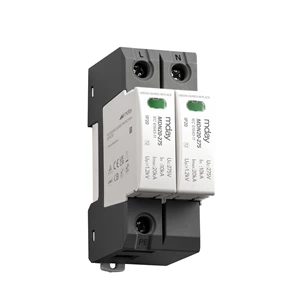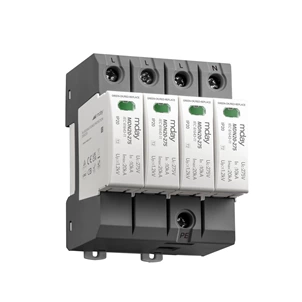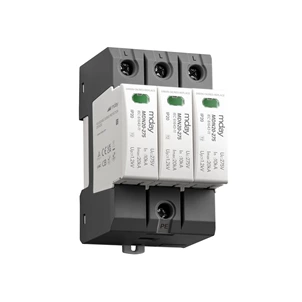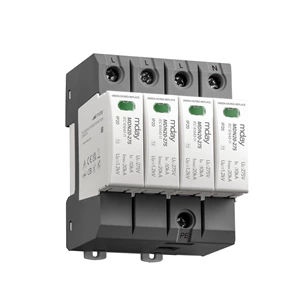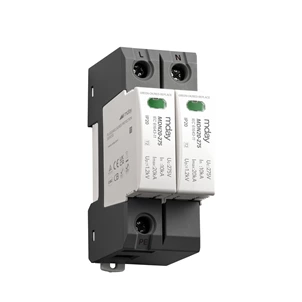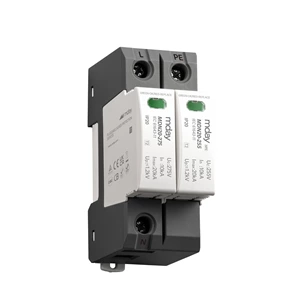Classification And Applicable Power System
classification and applicable power system
SPD is divided into three types according to different standards and test types.
T1 SPD has strong current passing capacity and is capable to pass the direct lightning strike simulation test of 10 / 350 μs waveform impulse current, so it is mostly installed at the main distribution incoming line or in areas with high risk of direct lightning strike. The 8 / 20 μs waveform impulse current corresponding to T2 SPD has smaller energy but faster rising edge, so the response speed of T2 SPD is faster and the limited transient overvoltage is smaller, which is mostly used at the incoming line of main distribution cabinet or near sensitive equipment.T3 SPD is widely used for the protection of precision equipment, sensitive equipment and long-distance equipment because of its extremely fast reaction speed but weak flow capacity. The pressure and protection level of these three types decrease step by step, and the refinement level increases step by step. In practical application, combined SPD is often selected.
SPD wiring mode is divided into common mode protection and differential mode protection according to different wiring modes of distribution system.
- TN-C system is mostly suitable for old industries. Because PEN line cannot discharge common mode interference, it is necessary to configure differential mode SPD between L-PEN or L-L to avoid the risk of PEN disconnection.
- TN-S system should adopt full-mode protection, common-mode interference is discharged through PE line, and common-mode SPD shall be installed between phase line / neutral line and PE line for longitudinal protection; At the same time, differential mode SPD is required for transverse protection between L-N or L-L to suppress voltage fluctuation between phases.
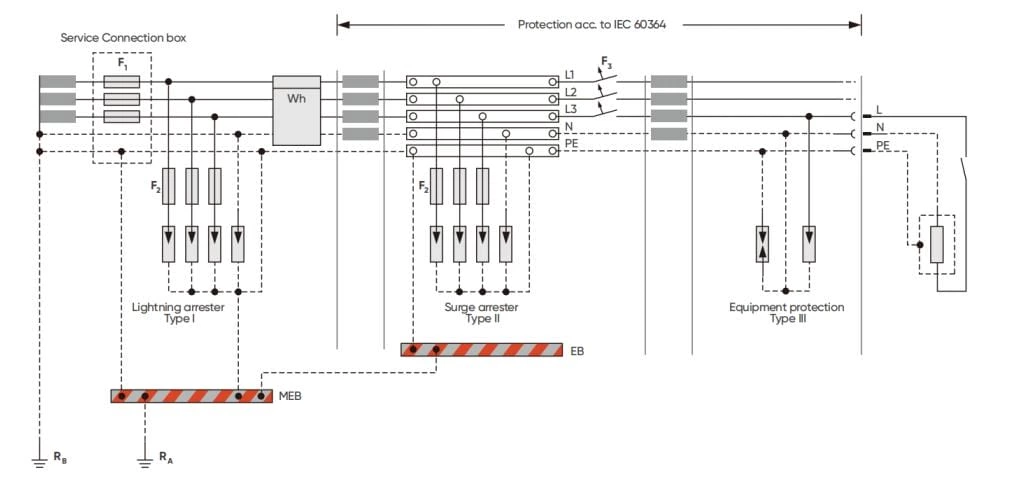
- TN-C-S system adopts mixed mode, with differential mode protection at the front end and common mode protection after PE / N lines are set at the back end.
- Common mode protection is the main method for TT system. Since equipment grounding is independent and common mode interference returns through ground wire, common mode SPD shall be installed in L-PE or N-PE; Differential mode SPD shall be arranged between L-N with the aid of differential mode protection, but high-sensitivity residual current protector is required.
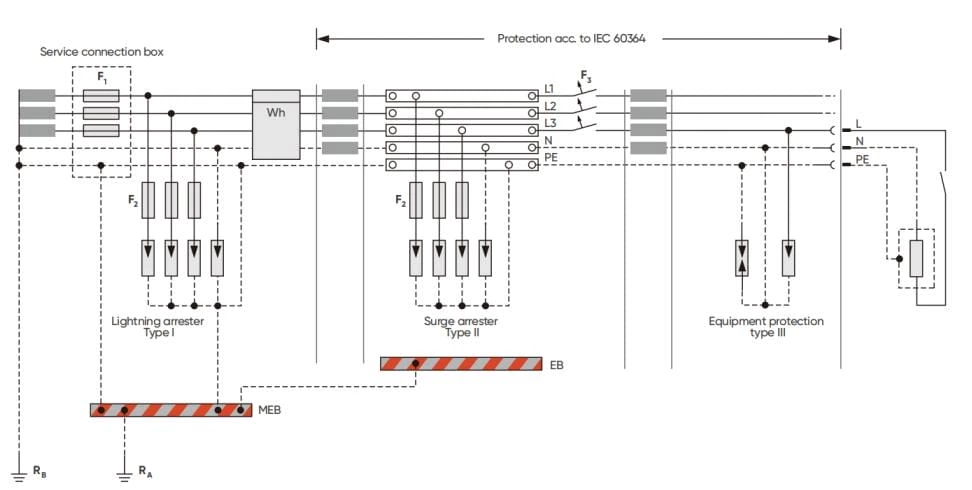
- The IT system requires extremely high common-mode protection. In case of single-phase grounding fault, the current is very small, and the common-mode SPD between L-PE or N-PE shall be used to suppress the overvoltage to ground; Differential mode protection is secondary, and differential mode SPD can be configured between L-L, but the system itself is insensitive to differential mode interference, and insulation monitoring device needs to be installed.





